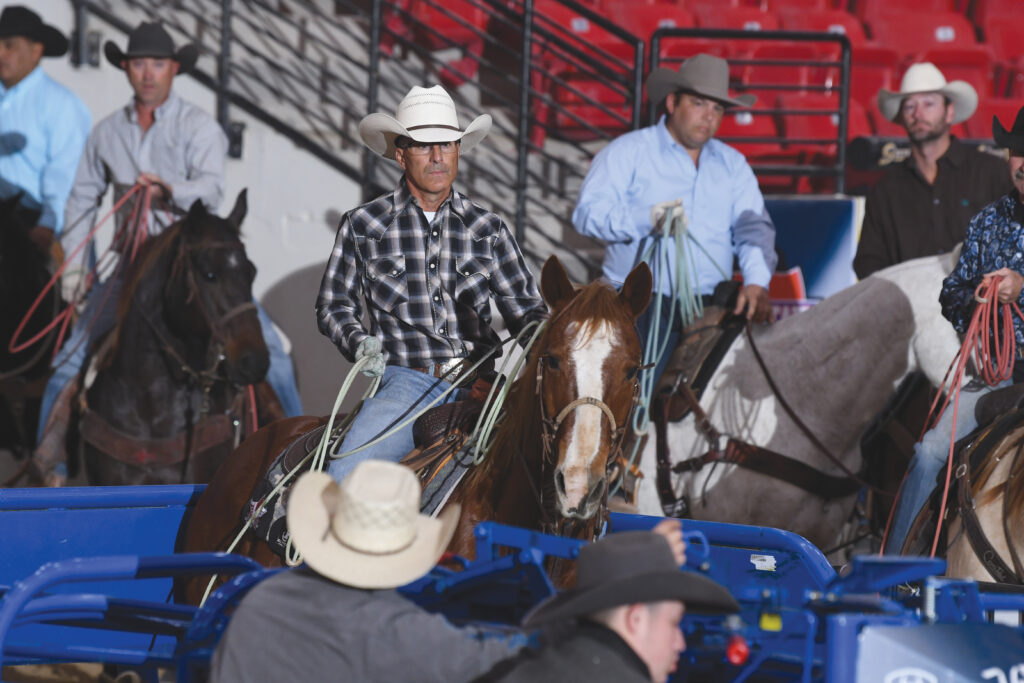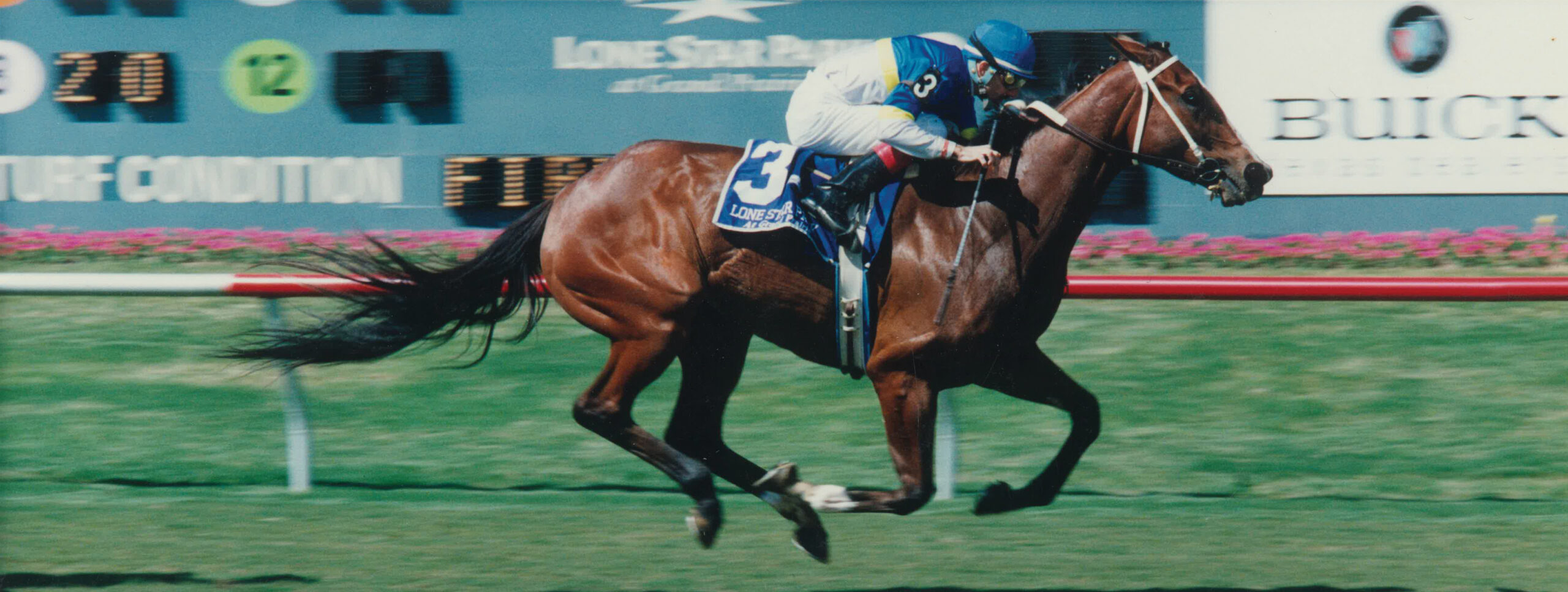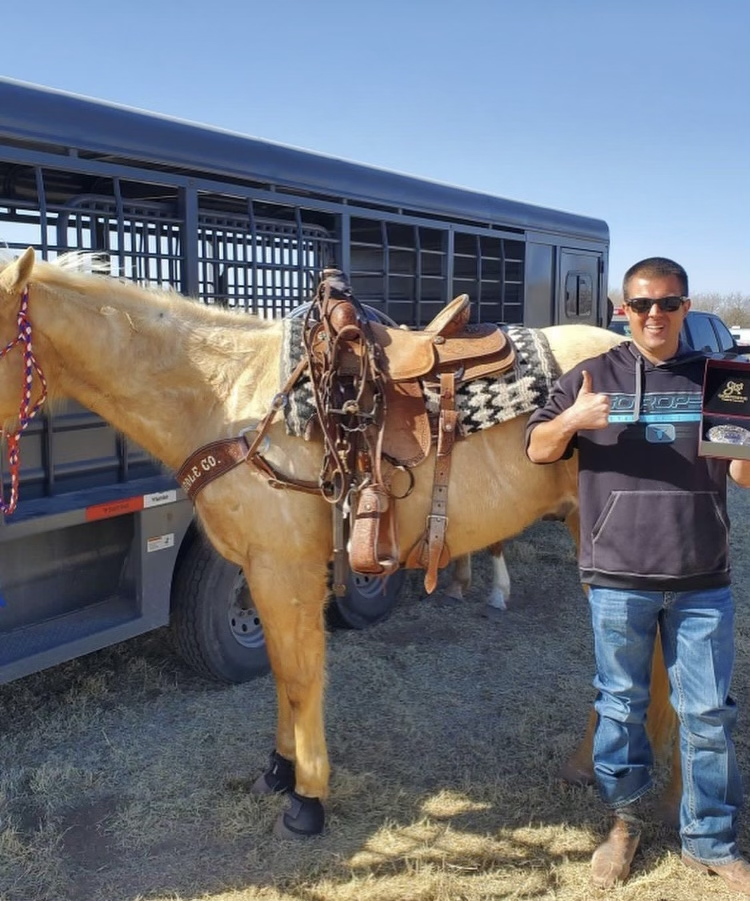Casey Lambert has worn a lot of different hats in our Western world. He grew up on the racetrack, and won nearly 3,400 races as a Thoroughbred and Quarter Horse jockey. He’s also spent much of his life in rodeo and roping arenas, as both a bull rider and a team roper.
Q: You grew up at the racetrack, right?
A: Yes, my brothers and sister (Chuck, Cody and Cheyann, who’s married to National Finals Rodeo steer wrestler Birch Negaard) and I grew up on our parents’ (Cliff and Glenna Lambert) place in El Paso, where we rode and roped every day. Dad was a jockey. He won the first All American Futurity at Ruidoso Downs (in New Mexico) riding Galobar in 1959. We had a really good life, and spent summers in Ruidoso. We didn’t grow up rich, but we didn’t lack for anything.
Q: You followed in your dad’s footsteps, first as a jockey and now as a racehorse trainer as Casey Lambert Training (CTL Training). Is it true you started your career as a jockey at 16, and rode in 22,000 races?
A: Yes, I rode in my first race two days after I turned 16, and retired two weeks after I turned 50. My first and last races were at Ruidoso Downs, and it was pretty cool to win my last race there since that’s also where it all started.
Q: You won a ton riding steers then bulls in the AJRA (American Junior Rodeo Association) as a young man. How tough was it to pick the track over the rodeo arena?
A: I had a great career as a jockey, but had the PBR (Professional Bull Riders) been around, I may have ridden bulls instead. Bull riders weren’t making much money rodeoing back when I was riding. I liked that you got paid to ride in a race—more if you won, but something no matter what. That weighed a lot in my decision. I started making good money riding in races at 16, and it was hard to walk away from that. My bull riding career was about 30 years too soon to see the kind of money guys are riding for today.
Q: Riding racehorses and bulls are both heavy-adrenaline, high-risk professions. How big a part did injuries play in your career?
A: Getting hurt as a jockey actually ended my bull riding career in 1999 when I was 34. I broke the C6 vertebra in my neck, and sent my X-rays to (Dr.) Tandy (Freeman). He told me I could make it back as a jockey, but would not be back as a bull rider. I never rode another bull. Being a jockey isn’t as rough day to day as riding bulls. But when you fall, the wrecks are usually worse at the track, especially if there’s a herd of horses behind you.
Q: How tall are you, and how tough was it to make weight to ride in races?
A: I’m 5’ 6” and weigh 145 now. I rode at 116-118 my whole career, so it’s nice not to have to dread getting on the scale every single day. It became a ritual for me to sweat off three to five pounds in the sauna on race days. That’s hard on your body and hard on your mind.
Q: You rode your last race at Ruidoso Downs on Labor Day in 2015. How did you know it was time to hang up the silks and start working as a trainer?
A: I knew I couldn’t be a jockey forever. I had friends in several sports that stayed too long, and it was sad to see. I’d had several serious injuries, and wanted to walk away while I could still walk. I got the win on the same track I started on, and left as the leading jockey at Ruidoso Downs for 2015. Everything just lined up. If the racing gods ever had a hand in it, that last day was scripted to perfection.
Q: You were the 2016 recipient of the Laffit Pincay Jr Award, which is presented each year to someone who has “served the racehorse industry with integrity, dedication, determination and distinction.” How big a deal was that to you?
A: That was huge to me. It was a respect thing. I always tried to represent our sport as a professional.

Q: You’ve roped all your life, right?
A: Yes. I always loved riding bulls, but the roping was my favorite. I headed for (Hall of Fame bull rider) Tuff Hedeman in high school, and we were the New Mexico state team roping champs in 1981.
Q: Your family’s racing roots run deep. How about your rodeo roots?
A: Dad’s been into racing since he was a kid. Mom’s dad, George Cosper, was one of the original members of the Cowboys’ Turtle Association. He roped as a young man, then trained racehorses later in life.
Q: How has team roping fit into every stage of your life, including now?
A: I still love to rope like I did when I was a kid. When they put me in the Ruidoso Downs Racehorse Hall of Fame in 2016, I told them that roping’s been a release for me my whole life. The life of a jockey is a roller coaster, with so many peaks and valleys. When I could just get loose and go rope, it always settled things for me.

Q: Head or heel, and what’s the highlight of your roping career so far?
A: I head way better than I heel. I headed for Cooper Bradshaw in the #10 at the World Series Finale in Vegas last December. We won second, and split $252,000. My $126,000 half is my biggest roping win by about $100,000.
Q: You and Brandi have been married a long time, and have two grown sons—Braxton’s 30 and Kyler’s 27. Kyler played baseball through college. Braxton’s your cowboy, right?
A: Yes, Brandi and I have been married since 1985, and she’s an amazing wife and mom. Braxton rode very little when he was young, but roping has done unbelievable things for Braxton as an adult on the autism spectrum. Braxton’s brilliant. He has a mind like Rainman. He got into NASCAR when he was little, and could tell you every tiny detail about it all. Braxton took up team roping a few years ago. He heads, and practiced for two years before he caught his first steer. Braxton’s a 3 roper, and won his first buckle this spring for fourth in the #7 at the NTR roping in El Paso, heading for Rudy Willie from Arizona. He had the best time. I know where Braxton got his passion for roping—me.







